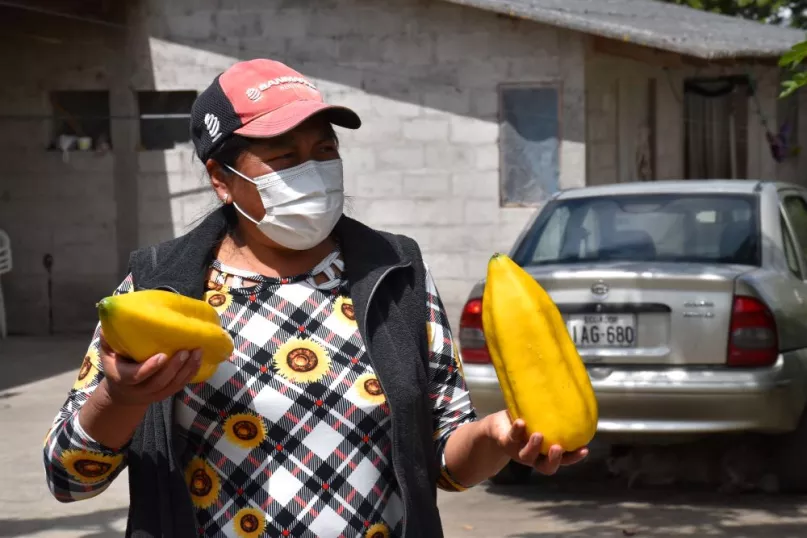Four Types of Policies to Help Build Climate Resilience

Devastating cyclones, torrential rain, desertification, melting glaciers and rising sea levels: the picture painted by climate change predictions can be frightening. But there is also momentum on climate action emerging globally with solutions to help us cope, adapt and build resilience. Having formal savings when there is a flood, having access to climate risk insurance when drought destroys the harvest, being able to receive mobile money from relatives in other parts of the country when there is a storm, or having access to credit to invest in more resilient crops or renewable energy sources: all of these services are at the core of what we at the Alliance for Financial Inclusion (AFI) call inclusive green finance.
Inclusive green finance is a policy area championed by AFI members: central banks, finance ministries and other financial regulators in emerging and developing economies. It aims to answer the question:
The framework that has emerged since we began working in this area in 2015 is the 4 Ps of inclusive green finance. The 4 Ps outline the different types of interventions in which financial regulators are engaging to advance this budding policy area.
1. Promotion
The first step on the inclusive green finance journey is promotion. It includes actions and interventions by regulators to prepare the private sector and other actors for inclusive green finance policy developments, such as building capacity, promoting coordination, establishing data frameworks and practicing moral suasion to advance inclusive green finance.
A good example is how the Philippines’ central bank, Bangko Sentral ng Pilipinas, has been raising awareness and increasing understanding of sustainability concepts within the institution and with financial service providers. They have organized forums and trainings aimed at banks’ senior management, key government agencies and private companies, and participate actively in regional and international collaborations of financial regulators and supervisors in this area. The central bank also conducts the Banking Sector Outlook Survey regularly, which includes a special section on the extent of banks’ exposure to, or plans to implement, sustainable or green finance, and gathers data on the impact of disasters on banking operations.
Promotion policies and initiatives are about preparing the ground for green finance interventions.
2. Provision
Provision is the next P and the policies in this category help to ensure that financial resources for green projects or related climate action activities are provided to MSMEs or individuals. There are several ways in which this can be achieved, including:
-
Lending policies, such as the regulatory lending target for green and sustainable finance set by the Bangladesh Bank for all financial institutions. This is a 15 percent lending target for sustainable purposes, of which at least 2 percent should be for green activities, as defined by the central bank. Compliance is factored in to the financial institutions’ sustainability rating as well as their CAMELS rating.
-
Refinancing facilities for green or resilience-building purposes, such as the ones implemented by Nepal Rastra Bank. One refinancing facility offers subsidized loans of around $9,000 to rebuild from floods and fires, while another offers subsidized loans for green technologies.
-
Discounted lending rates for specific purposes, such as those implemented by the Central Bank of Egypt (CBE) for on-lending to small-scale bakeries to start using natural gas to power their ovens instead of more polluting alternatives. A similar scheme, also by the CBE, supports investment into better farming irrigation systems.
3. Protection
Protection policies reduce the financial risks by “socializing” potential losses caused by climate change. Examples of this type of policy intervention include:
-
Targeted agricultural insurance products. For example, the Central Bank of Armenia was a part of establishing the Agricultural Insurers’ National Agency, a public-private partnership for agricultural insurance market development. The agency developed insurance products to protect farmers from losses due to hail and fluctuating temperatures.
-
Credit guarantee schemes to reduce the perceived risks of lending for certain purposes. The Bank of Ghana and the Central Bank of Nigeria developed credit guarantee schemes for agricultural lending, which absorb a certain part of the losses in the case of default.
4. Prevention
The fourth P is prevention and this pillar focuses on environmental and social risk management (ESRM) guidelines. These aim to avoid undesirable outcomes by lowering financial, social and environmental risks. Financial institutions use these guidelines when making credit decisions to make sure that loans meet specific sets of environmental and social criteria. Such guidelines have recently been developed by Ecuador’s financial sector supervisor and will be applied by credit cooperatives when making credit decisions moving forward. Other countries where such guidelines are in place include Nepal, Paraguay and Bangladesh.
Working together to support climate change resilience
As financial regulators move rapidly to advance inclusive green finance, there is still a long way to go to ensure the full understanding needed to develop, implement and supervise effective policies. The 4 Ps of inclusive green finance provide a framework for policymakers to consider the different types of policies and interventions at their disposal.
All stakeholders – from clients to FSPs to funders to policymakers – must work together to ensure that financial inclusion can fulfill its potential to support climate change resilience and mitigation.



This is a very interesting Blog
Leave a comment